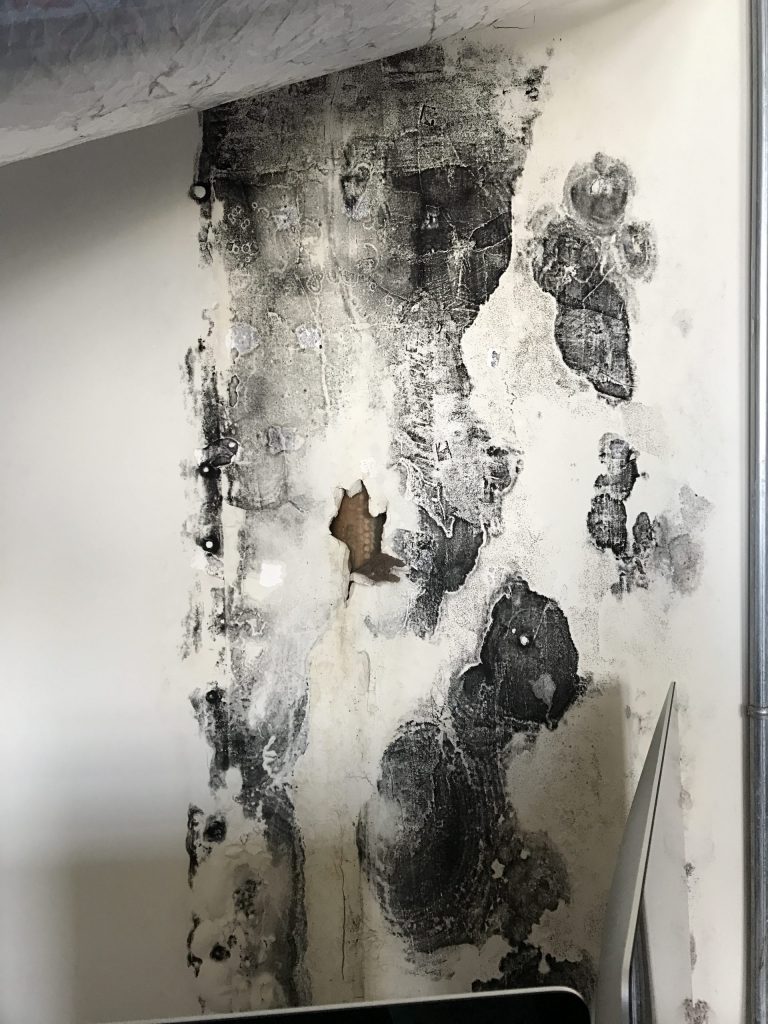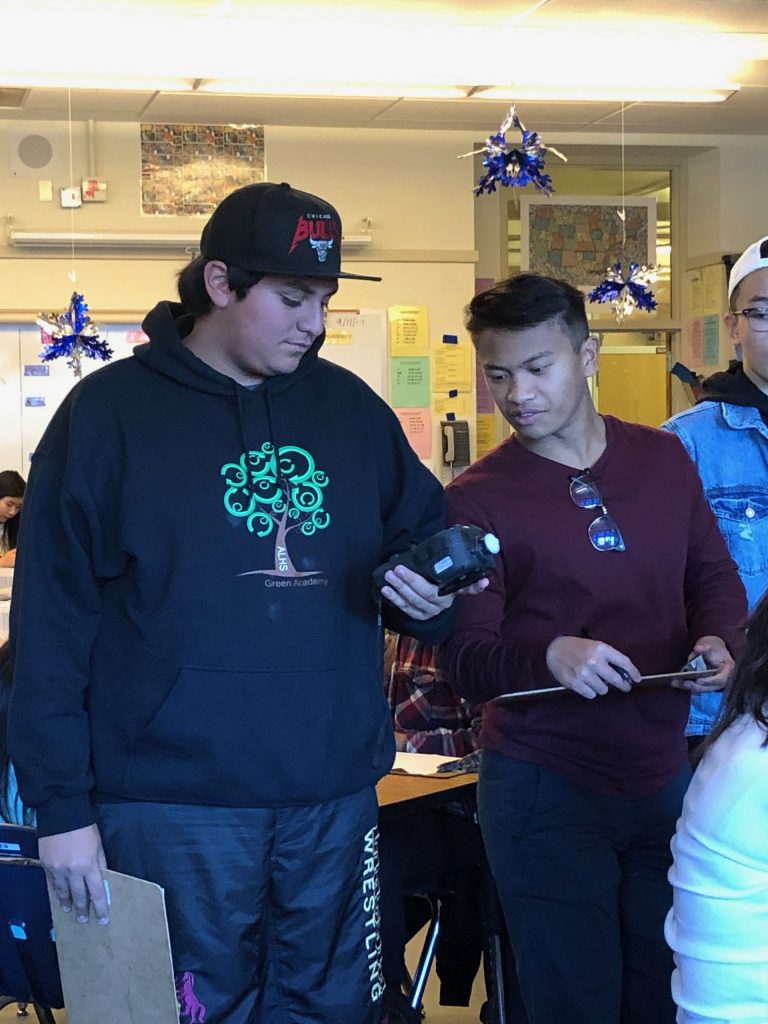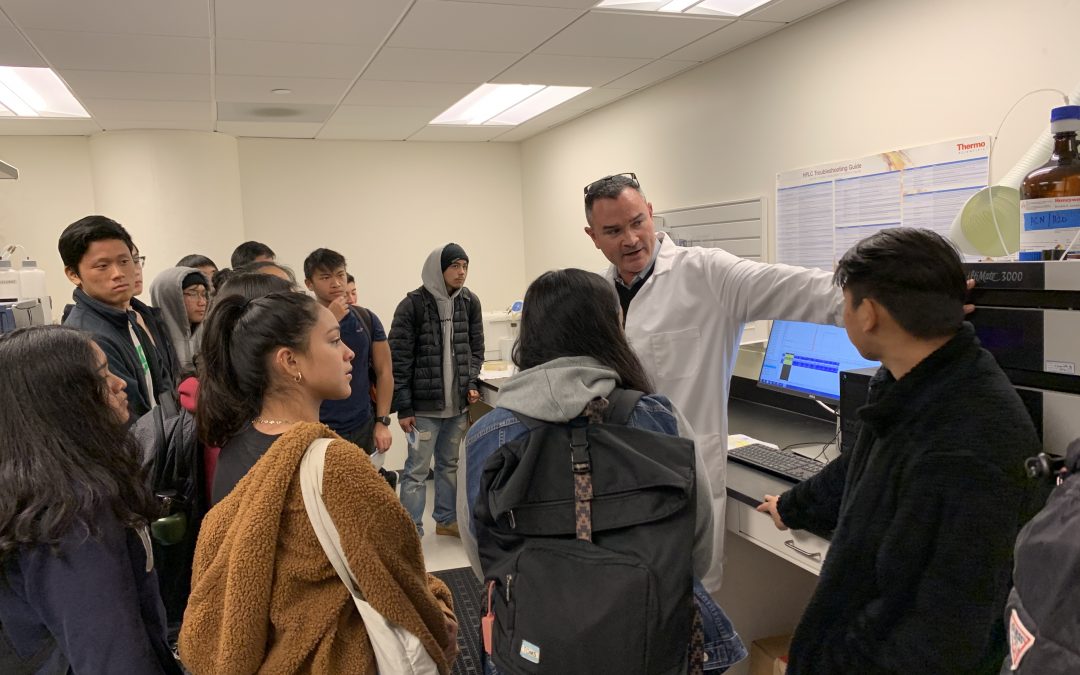By. Valerie Ziegler
The Green Academy
Every year, the senior class of the Green Academy at Abraham Lincoln High School in San Francisco is asked, “What environmental problem in your community would you like to address?” When the program began in 2012, the first few graduating classes focused on the most identifiable problems: litter, food waste, and waste systems. In 2017, the class overwhelmingly wanted to address air pollution. As the teacher, I remain to the side of these discussions and let students formulate their topic. The first student who brought up the topic of air pollution mentioned the high rates of asthma that she has noticed in her community. Another student chimed in that she lives near the 280 Interstate, which means she can never leave her bedroom window open. Yet another student in the class said, “But look outside. We are near the beach and the air is great.” This became a stepping stone to a full discussion on how complex air quality conditions can be in our little city of seven square miles and the connection between air quality and environmental injustice.
Capstone Civic Action Projects
The Green Academy is a three-year college and career technical education (CTE) program in the Energy, Environment, and Utilities sector. Each grade level of the program asks students to complete a capstone project that highlights their learning. The senior year project is done in collaboration with Generation Citizen – a national nonprofit whose mission is to empower young people to become engaged and effective citizens. The project requires students to tackle an environmental issue and teaches them the tools of advocacy. Students showcase their work at a Civics Day event with students from local schools.

Addressing Air Quality
The Class of 2017 was awarded the Action Award by Generation Citizen for their capstone project titled “Decreasing Pollution is Our Solution.” These students uncovered high rates of asthma in certain city neighborhoods and mold in classrooms that had been growing in size for years with no action. The students got started by learning all they could about air quality with guest speakers from the Bay Area Air Quality District (BAAQD) and the creator of an app called Ambiciti, which measures air and noise pollution. They used their new knowledge to create a presentation for elementary schools in San Francisco’s most impacted neighborhoods. They worked with a school nurse and the health educator from a community organization to educate elementary school students about air quality. The most complex part of the project for students was addressing a leak on the roof that caused mold to spread through the walls and behind the cabinets of several classrooms. The mold had been there for years and was annually reported on work orders, but the project’s scope and expense meant that every year students came in and sat in classrooms with mold-covered walls. The class wrote an article for the school newspaper and brought in the district environmental team and a member of the district’s Board of Supervisors to address the issue. Media attention and pressure from the district board member led to work being done in those classrooms to fix the leak and remove the mold during the summer of 2017.
Measuring Air Quality
In the fall of 2018, the Green Academy was approached by the U.S. Green Building Council of Northern California and Stok to take part in a pilot project involving the implementation of the ARC platform in schools as a way for students to monitor school data. This included having volunteers come to the classroom to show students how to measure air quality in the school. The high level of interest in air quality from the previous year signaled to me that this was a project worth pursuing. It also allowed us to bring mentors into the classroom, a key component of our CTE program. We kicked off the ARC platform project in our junior-level engineering class. Boris Gamazaychikov of Stok spent an afternoon with the students gathering air quality data from locations across campus. Students were fascinated by the data they were gathering. Why were the CO2 levels so much higher at the end of the day? Why were they higher in classes like ours of 36 students versus classes of only 20? What are the implications of this data? Before we had time to process this data the Camp wildfire broke out. Schools were encouraged to keep students inside and to limit field trips. This didn’t help those of us teaching and learning in 80-year-old buildings with no ventilation systems. A directive came from the Superintendent to duct tape our windows – a suggestion that even students immediately questioned based on what they learned during our ARC testing. The air quality continued to get worse. Everyone had a headache and those with asthma simply stayed home. Finally, on November 15, 2018, school was closed until after Thanksgiving break. It was apparent that what we were studying in class had just become a real-time research project.

Experiencing Poor Air Quality
Our research on air quality had been limited to studying indoor air quality levels online and gathering basic data in our classrooms. Now students were experiencing dangerous air quality conditions that forced them inside. Despite being 189 miles away from our school in San Francisco, the effects of the Camp wildfire were undeniable. Ash littered the surfaces of cars on the street. Anyone who dared to go outside wore an N95 mask. Nights were greeted by a moon that almost appeared to be on fire itself. Our study of what seemed to an environmental issue that happened in other places had now become a reality check. It became evident that there was much more to be done with the students regarding air quality. In May of 2019, the Green Academy was awarded a grant from BAAQD to educate the community on air quality and pollution, create structures inside the school to support better air quality, and work with San Francisco Unified School District to support students and families during times of poor air quality. This would be our guiding work for the 2019 – 2020 school year. Examples of grants offered by the BAAQD can be found here.
Going Forward
The Spring 2020 semester began with a class decision to focus their capstone efforts on air quality. Using the BAAQD grant, we purchased Purple Air sensors to install on campus and collect regular data. In January 2020, the class took a field trip to BAAQD where students were given a tour of the lab and had a chance to meet with a meteorologist. While there, we were able to observe live air quality data from Australia during the wildfires there. As March approached, we began our citizenship project with a lesson on federalism and understanding the different levels of government to educate students on who to contact with specific issues related to air quality. On March 13, 2020, our schools closed for the semester due to COVID-19 and so did our work on this project, at least for now. During our first Zoom call a student asked, “What about our air quality project?” Through virtual learning, we are able to keep the focus on air quality going, for example, by having students conduct an audit of products used in their homes using lessons provided by the U.S. Green Building Council’s Learning Lab and Teaching Tolerance. BAAQD has allowed us to extend our grant until June 2021. As I look to next year and how the Class of 2021 will take on this project of addressing air quality, I look through the lens of how much our lives have changed in such a short time. Our work will be more important than ever; creating a plan for times of poor air quality can be enveloped into a plan for times of educating during a health crisis. I hope that the voice of young people will be heard in this planning for our future.
Author Bio
Valerie Ziegler is a National Board Certified and 2010 California Teacher of the Year at Abraham Lincoln High School in San Francisco. She teaches a mixture of social studies and college and career technical education (CTE) elective courses. In 2011, Valerie created the Green Academy, a three-year CTE program with electives in the Energy, Environment, and Utilities sector. The goal of this program is to give students the opportunity to learn about content and careers in environmental fields using a hands-on and out-of-classroom approach. Follow @alhsgreenacademy to see our work.

